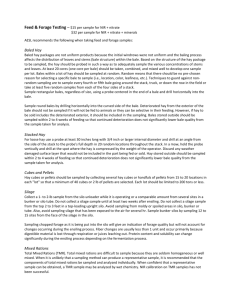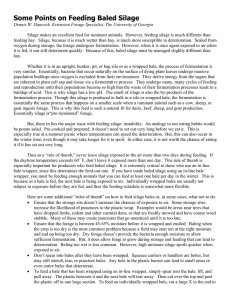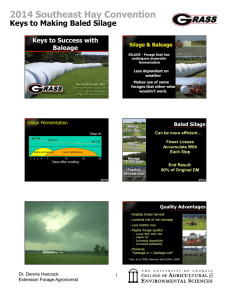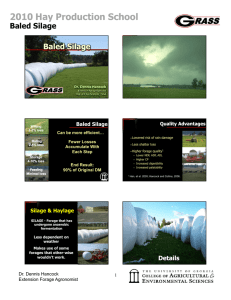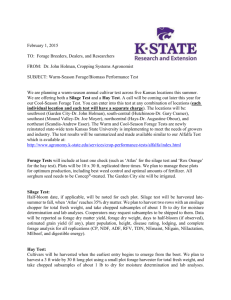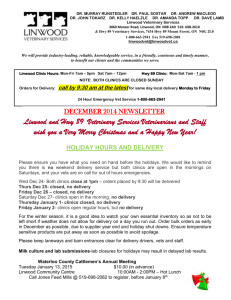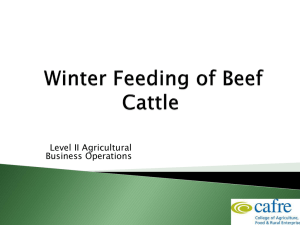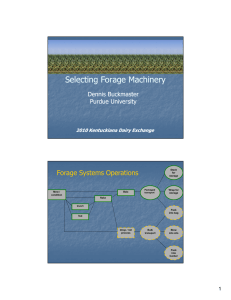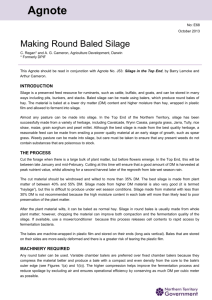Feed Sampling SOP
advertisement
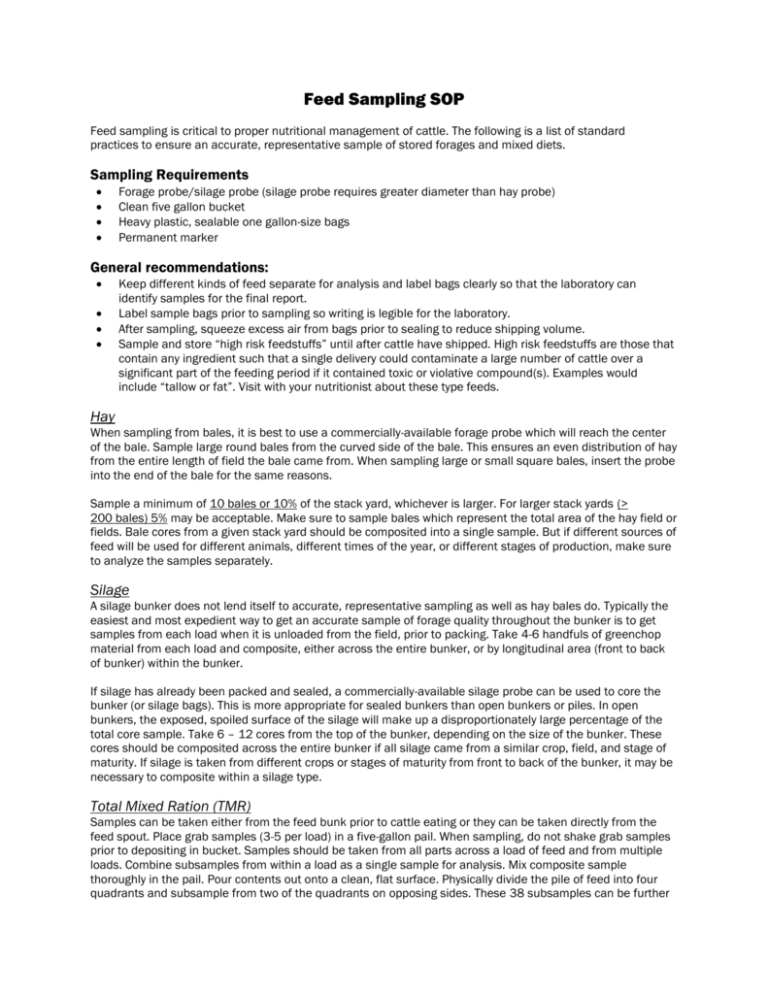
Feed Sampling SOP Feed sampling is critical to proper nutritional management of cattle. The following is a list of standard practices to ensure an accurate, representative sample of stored forages and mixed diets. Sampling Requirements Forage probe/silage probe (silage probe requires greater diameter than hay probe) Clean five gallon bucket Heavy plastic, sealable one gallon-size bags Permanent marker General recommendations: Keep different kinds of feed separate for analysis and label bags clearly so that the laboratory can identify samples for the final report. Label sample bags prior to sampling so writing is legible for the laboratory. After sampling, squeeze excess air from bags prior to sealing to reduce shipping volume. Sample and store “high risk feedstuffs” until after cattle have shipped. High risk feedstuffs are those that contain any ingredient such that a single delivery could contaminate a large number of cattle over a significant part of the feeding period if it contained toxic or violative compound(s). Examples would include “tallow or fat”. Visit with your nutritionist about these type feeds. Hay When sampling from bales, it is best to use a commercially-available forage probe which will reach the center of the bale. Sample large round bales from the curved side of the bale. This ensures an even distribution of hay from the entire length of field the bale came from. When sampling large or small square bales, insert the probe into the end of the bale for the same reasons. Sample a minimum of 10 bales or 10% of the stack yard, whichever is larger. For larger stack yards (> 200 bales) 5% may be acceptable. Make sure to sample bales which represent the total area of the hay field or fields. Bale cores from a given stack yard should be composited into a single sample. But if different sources of feed will be used for different animals, different times of the year, or different stages of production, make sure to analyze the samples separately. Silage A silage bunker does not lend itself to accurate, representative sampling as well as hay bales do. Typically the easiest and most expedient way to get an accurate sample of forage quality throughout the bunker is to get samples from each load when it is unloaded from the field, prior to packing. Take 4-6 handfuls of greenchop material from each load and composite, either across the entire bunker, or by longitudinal area (front to back of bunker) within the bunker. If silage has already been packed and sealed, a commercially-available silage probe can be used to core the bunker (or silage bags). This is more appropriate for sealed bunkers than open bunkers or piles. In open bunkers, the exposed, spoiled surface of the silage will make up a disproportionately large percentage of the total core sample. Take 6 – 12 cores from the top of the bunker, depending on the size of the bunker. These cores should be composited across the entire bunker if all silage came from a similar crop, field, and stage of maturity. If silage is taken from different crops or stages of maturity from front to back of the bunker, it may be necessary to composite within a silage type. Total Mixed Ration (TMR) Samples can be taken either from the feed bunk prior to cattle eating or they can be taken directly from the feed spout. Place grab samples (3-5 per load) in a five-gallon pail. When sampling, do not shake grab samples prior to depositing in bucket. Samples should be taken from all parts across a load of feed and from multiple loads. Combine subsamples from within a load as a single sample for analysis. Mix composite sample thoroughly in the pail. Pour contents out onto a clean, flat surface. Physically divide the pile of feed into four quadrants and subsample from two of the quadrants on opposing sides. These 38 subsamples can be further mixed and subsamples using a similar procedure to reduce the total sample size for analysis. Keep samples from different loads and different diets/rations separate for analysis. Nutrients of Interest Typical, basic, feed analyses for ruminant diets include: Moisture Crude Protein Acid Detergent Fiber or Crude Fiber Calcium Phosphorus In addition, feeds can be analyzed for many other nutrients. Available protein may be of interest if ensiled feed has undergone any appreciable heating. Trace elements such as Copper (Cu), Zinc (Zn), and Manganese (Mn) are of interest when hay makes up a substantial portion of the diet, such as wintering cows or starting/backgrounding calves.
